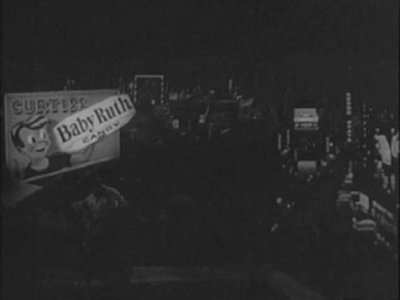
[Main Page] | [History] | [Vaudeville] | [Misc.] | [Films & Film Projects]
 | Mikael Uhlin's Marxology @ marx-brothers.org
[Main Page] | [History] | [Vaudeville] | [Misc.] | [Films & Film Projects] |

|
This picture began as an attempt to create a solo vehicle for Harpo. The original story, The Sidewalk (which later became Sidewalks of New York, Diamonds in the Sidewalk or Diamonds in the Pavement) was suggested by Harpo himself and written for him by Ben Hecht, assisted by gag writer Frank Tashlin. The movie, basically a study in pantomime, recalled the freewheeling pre-talkie days, and the word-of-mouth was so good that the project had attracted Leo McCarey as a potential director. But before any of these events could come to fruition, the bottom dropped out. Tashlin, Hecht and Harpo all blamed producer Lester Cowan, who had lied about the film's value to the studio. With the original script literally dashed to bits, Hecht removed his name from the picture which went under a series of working titles like Blondes Up, Blonde Heaven and Hearts and Diamonds - diamonds being so central to the plot - until it finally became Love Happy. Tashlin was paired with Mac Benoff to write a framing story and narration for Groucho who - along with Chico - agreed to appear with their brother who at this point desperate to salvage his dream project. However, the order of events isn't as clear as has been suggested. As early as 20 June 1947 (filming commenced more than a year later), Groucho wrote to his daughter Miriam and mentioned a film Ben Hecht was writing for Harpo and Chico. A subsequent letter (of 25 September) already mentions Groucho's guest role as a narrator. His letter of 18 October 1947 speaks once more of the film, describing it as the story Hecht "wrote for Harpo, and finally Chico got in it, and then I suddenly found myself in it for a brief bit." Additionally, with money running low and to raise funds to complete the movie, the producers came up with the idea of selling advertising space on the neon signs on the roof that was the setting for the ending of the film. Nowadays, product placement like this is very common but back then it wasn't. The overall end result, despite a positive review from The New York Times and other major critics, remained a disappointment to Harpo until his dying day. In what was at one time to be an experiment in pantomime, it is wise-cracking Groucho as low rent private eye Sam Grunion who fares best, particularly in a brief opening scene with Marilyn Monroe, whose appearance in the picture upgraded her to co-star billing during re-releases, some of them under the name Kleptomaniacs. An interesting thing about this film is how it deals with female cleavages. Groucho claimed that the dress of Marilyn Monroe was so low-cut that he forgot the dialogue, which makes it hard to understand why the cleavage of Ilona Massey (Madame Egilichi) very obviously have been blacked out from extant prints of Love Happy. Steven R. Wright has written to me about this and it happens in the scene where Madame Egilichi is giving Harpo the "whammy" to get him to talk and tell her where the sardine can with the Romanov diamonds is. Close-ups of Ilona shows a big black dot on her chest, probably added already during production. 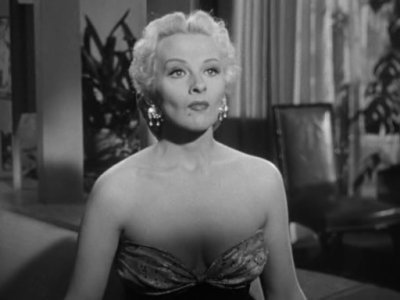 There obviously were a lot of editing and changes before Love Happy premiered on 12 October 1949. Some stills reveal these changes, like Harpo being present when Chico plays card with a dog, and Marilyn Monroe appearing on the rooftop set. Additionally, in the Italian trailer of Love Happy (or Una notte sui tetti, roughly A Night on the Roof), the scene where Groucho attempts to frisk Harpo and Ilona Massey takes place in Grouchos' office instead of on the roof as in the finished film. Maybe this is an indication that all of Grouchos scenes originally were to take place in his office and that some of them were re-shot when the product placement made the rooftop sequence important. Additionally, the DVD-reissue of the film includes six minutes not found in previous versions. These include Groucho describing how he has tracked Madame Egilichi all over the world (showing a series of photos depicting him holding her in various sexy poses, concluding with a photo of her in a 1950's style bathing suit), an additional encounter between Chico and a drooling Leon Belasco who is offered a parade of beauties, as well as different music scoring for some scenes. Steven R. Wright has studied the DVD in detail and here's his report on the differences. He admits that he has "always been kind of soft-headed, uh, -hearted towards this film and I may be the only one out there who enjoys it to the extent of becoming familiar enough with it to notice all these differences". And this is what he noticed:
|
|
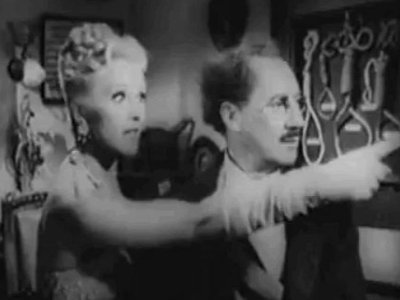 *
*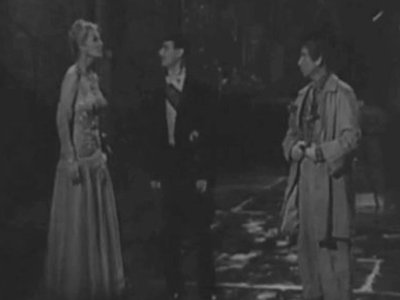
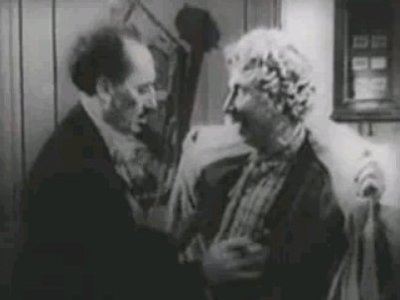 *
*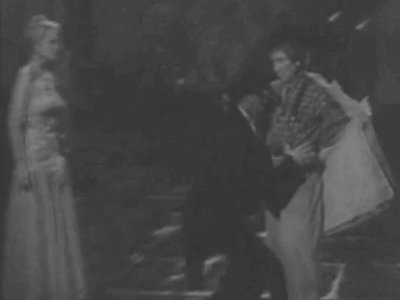
"Oh, no, I'm not getting into that!"
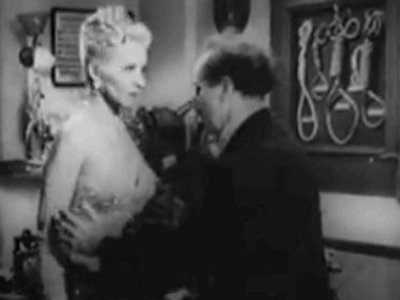 *
*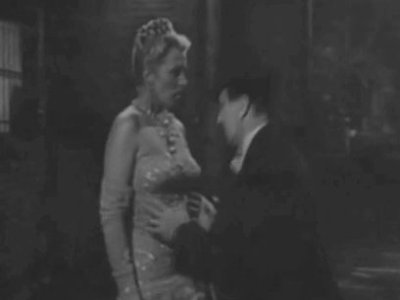
- - -
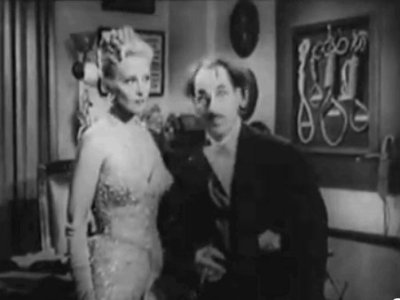 *
*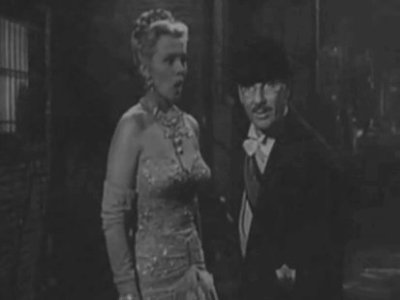
"If this were a French picture I could do it"
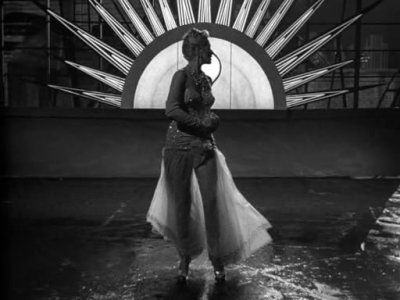 *
*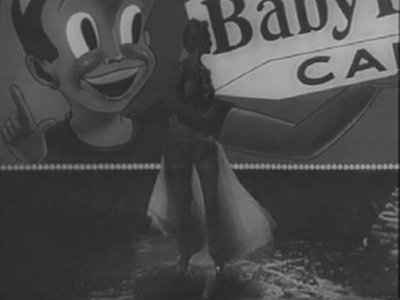
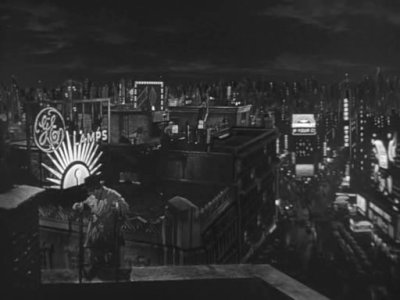 *
*